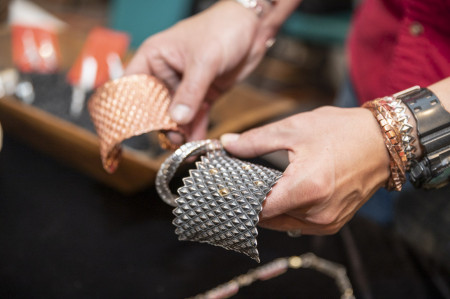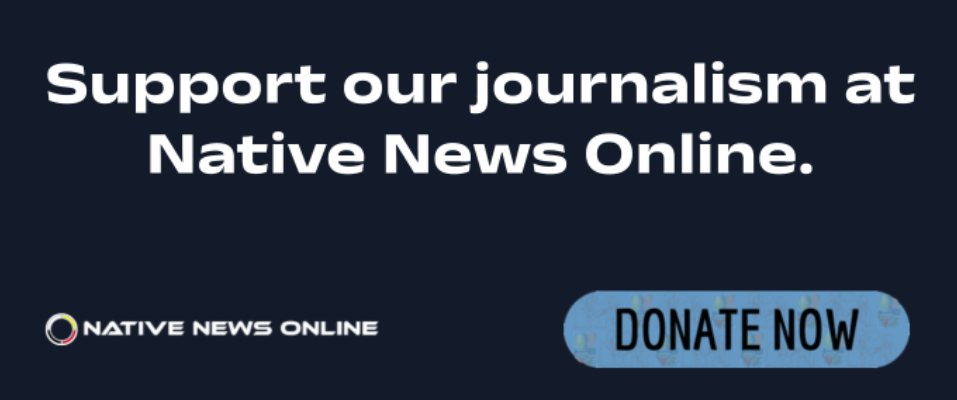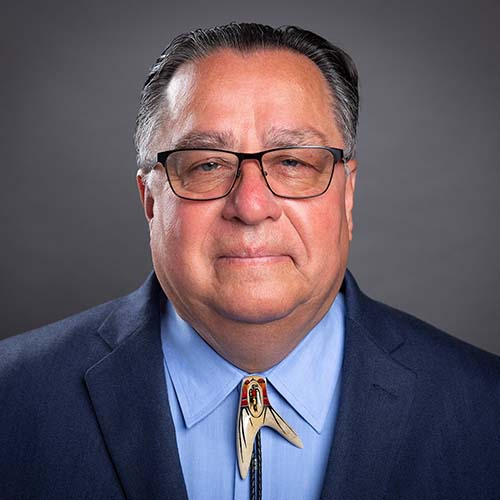
- Details
- By Levi Rickert
The Southwestern Association for Indian Arts (SWAIA) is excited to announce that the annual Winter Indian Market will be held at the Santa Fe Community Convention Center on Saturday, November 30, from 10 a.m. to 6 p.m., and Sunday, December 1, from 9 a.m. to 4 p.m. Tickets are available for $15 per day or a weekend pass for $25. To purchase tickets, click here.
This year’s winter marketplace will showcase over 160 juried artists from the esteemed Santa Fe Indian Market, providing collectors and holiday shoppers the chance to buy Native American art directly from the creators. Art forms on display will include pottery, jewelry, two-dimensional works, sculpture, Pueblo wood carving, beadwork, quillwork, basketry, and youth artistry.
“Winter Market is one of my favorite events of the year. It is wonderful to gather with visitors and locals to shop the market and celebrate Indigenous artistic excellence,” Jamie Schulze, Executive Director of SWAIA said.
Stay tuned for more information about traditional food offerings, performances, and the silent auction, which will be available on the SWAIA website in the coming weeks.
More Stories Like This
Zuni Youth Enrichment Project Takes Top Emerging Artist Apprentices to Phoenix for Artistic Exploration and Cultural ImmersionFrom Dishwasher to Award-Winning Chef: Laguna Pueblo's Josh Aragon Serves Up Albuquerque's Best Green Chile Stew
Rob Reiner's Final Work as Producer Appears to Address MMIP Crisis
Vision Maker Media Honors MacDonald Siblings With 2025 Frank Blythe Award
First Tribally Owned Gallery in Tulsa Debuts ‘Mvskokvlke: Road of Strength’
Help us defend tribal sovereignty.
At Native News Online, our mission is rooted in telling the stories that strengthen sovereignty and uplift Indigenous voices — not just at year’s end, but every single day.
Because of your generosity last year, we were able to keep our reporters on the ground in tribal communities, at national gatherings and in the halls of Congress — covering the issues that matter most to Indian Country: sovereignty, culture, education, health and economic opportunity.
That support sustained us through a tough year in 2025. Now, as we look to the year ahead, we need your help right now to ensure warrior journalism remains strong — reporting that defends tribal sovereignty, amplifies Native truth, and holds power accountable.
 The stakes couldn't be higher. Your support keeps Native voices heard, Native stories told and Native sovereignty defended.
The stakes couldn't be higher. Your support keeps Native voices heard, Native stories told and Native sovereignty defended.
Stand with Warrior Journalism today.
Levi Rickert (Potawatomi), Editor & Publisher


